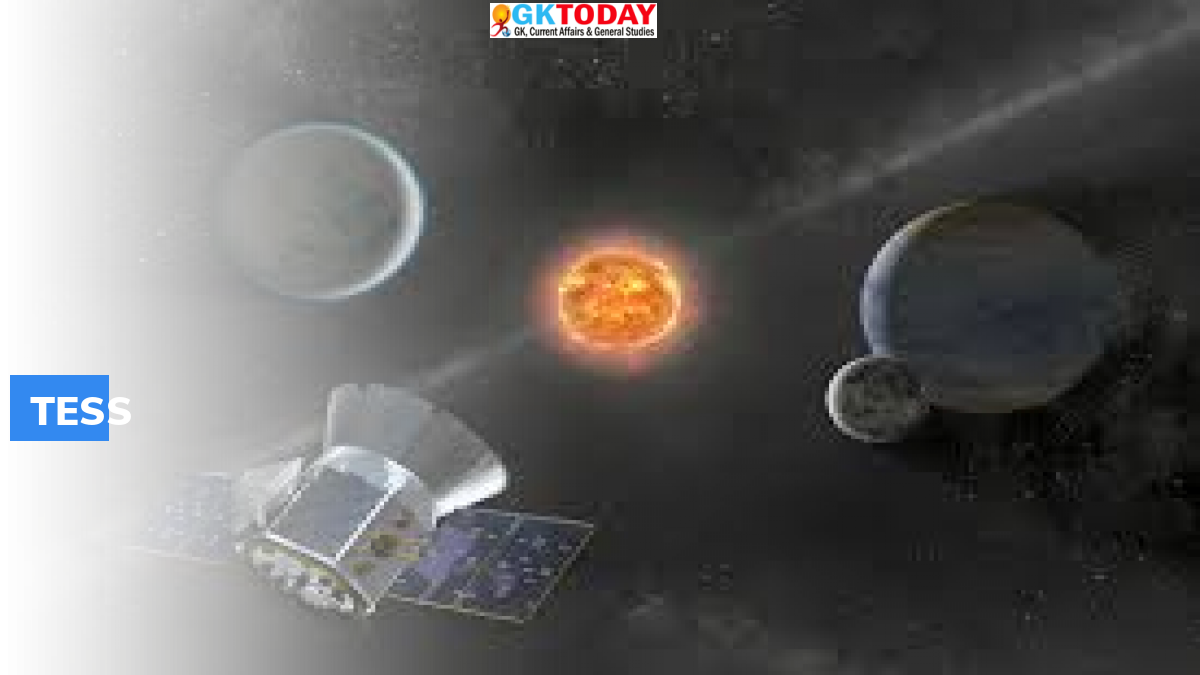Transiting Exoplanet Survey Satellite
The Transiting Exoplanet Survey Satellite, also called TESS is a space telescope. It was designed by NASA. The main objective of the satellite is to search for exoplanets. It was launched in 2018. It was launched in a Falcon 9 rocket.
About TESS
The TESS has identified 2,601 exoplanets as of April 2021. The main objective of TESS is to identify brightest stars near the earth and also search for exoplanets. TESS is capable of studying mass, size, orbit range and density of planets. This includes small planets and rocky planets in the habitable zones of their stars. Also, TESS will find small planets around the nearest stars. TESS completed it southern survey in July 2020 and began its northern survey. It was launched by SpaceX.
Orbit of TESS
The apogee (farthest point from the earth) of TESS is approximately at the distance of the moon! The perigee is one lakh kilo metres. Its resonance with the moon is 2:1. That is, it orbits the earth twice while the moon orbits once. This is the first time a satellite is using such a high orbit. The name of the orbit is P/2 as it is half the moon’s orbit in terms of time.
Funding
TESS is led by Massachusetts Institute of Technology. The seed funding is done by Google.
Working of TESS
TESS uses transit method to detect exoplanets. It detects small dips in brightness. This indicates that the planet has passed in front of them. If the dips are repetitive, it indicates that the planets have passed in front of its star. The data is then validated by repeated observations.
Popular and important Discoveries of TESS
- The first observation of TESS was comet C/2018N1.
- The first exoplanet observation was Pi Mensae. It is a super-earth like planet orbiting a star every 6 days. It was discovered in July 2018
- In September 2018, TESS discovered LHS 3844 b. It is one of the planets with known short orbital period. It orbits a red dwarf LHS 3844. The orbital period of the planet is 11 hours.
- In October 2018, TESS discovered HD 202772A b orbiting HD 202772 star. It was an inflated hot Jupiter. Also, it is one of the rare hot Jupiters known to humans. It is located in constellation Capricornus. Also, it is the most strongly irradiated planets known to humans. It orbits its star once in 3.3 days.
- HD 21749 c was TESS’s first discovery of earth-sized planet. It is described as “Likely rocky”. Its diameter is 89% of the earth’s diameter. Its surface temperature is 427 degrees Celsius. It orbits HD 21749 star. Its orbit time is 8 days.
- In July 2019, TESS turned its camera to the northern skies. It discovered a young exoplanet DS Tuc Ab in the Tucana Horologium. The Tucana Horologium is a stellar association. It is one of the largest stellar associations known to humans. The European Space Agency CHEOPS mission is to study DS Tuc Ab.
- In July 2019, exoplanets were discovered around M-type dwarf star GJ 357. The GJ 357 b exoplanet was a hot earth. The others were GJ 357 c and GJ 357 d. The GJ 357 d might possess habitable conditions.
- In September 2019, TESS observed its first tidal disruption event. It was named ASASSN-19bt.
- In January 2020, TOI 700 d was discovered. It was the first earth-sized exoplanet that was discovered in the habitable zone. It is located in Dorado constellation. It also has TOI-700c, a super earth and TOI 700b, an earth-sized planet. This system is unique as it has a larger planet between two smaller planets.
- In January 2021, four extra solar planets were discovered. They orbit sun like star HD 108236. Of the four planets three are sub neptunes and one super earth.
- In January 2021, TESS discovered the first six star system. It was named TIC 168789840. These stars are in three binary pairs.
- In May 2021, Neptune sized exoplanet was discovered in Vela constellation. It was named TOI-1231 b.


